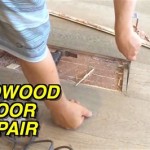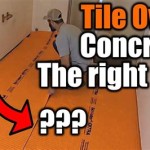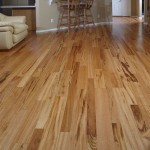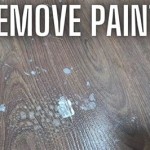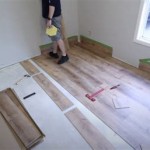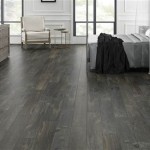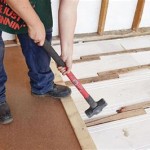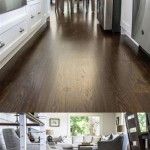Can Vinyl Plank Flooring Be Installed Over Plywood Subfloor In A Kitchen?
Vinyl plank flooring (VPF) has become a popular choice for kitchen renovations and new constructions alike. Its durability, water resistance, and ease of installation are significant draws, particularly when compared to traditional options like hardwood or tile. A critical aspect of a successful VPF installation lies in the preparation of the subfloor, and in many kitchens, that subfloor is constructed of plywood. The viability of installing VPF directly over a plywood subfloor in a kitchen environment depends on multiple factors, all of which must be carefully considered to ensure longevity and prevent future problems. This article outlines the key considerations and best practices for installing vinyl plank flooring over a plywood subfloor in a kitchen setting.
The primary advantage of using plywood as a subfloor stems from its structural stability and ability to provide a smooth, even surface. Plywood typically consists of multiple layers of wood veneer glued together, offering significant resistance to warping and flexing. This rigidity is essential for supporting the thin and flexible nature of most vinyl plank flooring options. However, simply having a plywood subfloor is not sufficient. The quality of the plywood, its installation, and the presence of any existing damage are all critical determinants in the success of a VPF installation.
Before initiating the installation process, a thorough inspection of the plywood subfloor is mandatory. This inspection should focus on identifying any signs of water damage, unevenness, or structural deficiencies. Kitchens are particularly prone to moisture issues due to spills, leaks, and humidity. Any existing water damage must be addressed immediately, which may involve replacing sections of the plywood that have been affected by rot or mold. Furthermore, all screws and nails must be properly seated, and any protruding fasteners should be hammered down or replaced to prevent them from interfering with the laying of the vinyl planks.
The type of vinyl plank flooring selected will also influence the extent of subfloor preparation required. Some VPF products are designed to be more forgiving of minor imperfections in the subfloor, while others require a perfectly smooth and level surface. Thicker vinyl planks, and those with an attached underlayment, often offer greater tolerance for imperfections. Regardless of the specific product, meticulous preparation will significantly improve the overall outcome and ensure that the flooring adheres properly and remains stable over time.
Ensuring a Level and Stable Subfloor
One of the most crucial steps in preparing a plywood subfloor for vinyl plank installation is ensuring that it is level and stable. Any significant dips, humps, or undulations in the subfloor will telegraph through the vinyl plank flooring, resulting in an uneven and unsightly surface. These imperfections can also create stress points that can lead to cracking or separation of the planks over time, particularly in high-traffic areas of the kitchen. The recommended method for assessing the levelness of the subfloor involves using a long straightedge or a level in conjunction with a measuring tape.
The straightedge or level should be placed across the subfloor in multiple directions, and the measuring tape should be used to measure the gap between the straightedge and the subfloor at various points. Any gaps exceeding the manufacturer's recommended tolerance (typically 3/16 inch over a 10-foot span) will need to be addressed. Small dips and imperfections can often be filled using a self-leveling compound or a patching compound specifically designed for subfloor repair. Larger discrepancies may require the installation of shims or additional layers of plywood to bring the subfloor into compliance. It is essential to allow the repair materials to fully cure and dry before proceeding with the VPF installation.
Stability is equally important. A subfloor that flexes or moves significantly underfoot will compromise the integrity of the vinyl plank flooring. The plywood subfloor should be securely fastened to the floor joists below, with screws or nails spaced at appropriate intervals. If there is any evidence of loose or squeaky sections of the subfloor, additional fasteners should be added to eliminate movement. Reinforcing the subfloor with additional plywood layers may also be necessary if the existing plywood is too thin or structurally unsound. This is particularly relevant in older homes where the original subfloor may not meet current building codes.
Addressing Moisture Concerns in the Kitchen
Kitchens are inherently prone to moisture, and excessive moisture can wreak havoc on a plywood subfloor. Even small amounts of moisture can lead to swelling, warping, and ultimately, degradation of the plywood. This can result in an uneven surface, which, as discussed earlier, will negatively impact the performance and appearance of the vinyl plank flooring. Therefore, addressing moisture concerns is paramount before installing VPF in a kitchen.
The first step is to identify and resolve any existing sources of moisture. This may involve repairing leaky faucets, dishwashers, or refrigerators. It is also important to ensure that the kitchen is properly ventilated to prevent the build-up of humidity. Using exhaust fans during and after cooking can help to remove excess moisture from the air. Additionally, consider installing a vapor barrier between the plywood subfloor and the vinyl plank flooring, particularly if the kitchen is located on a concrete slab or over a crawlspace. This barrier will help to prevent moisture from migrating up through the subfloor and damaging the VPF.
The type of adhesive used to install the vinyl plank flooring can also play a role in moisture management. Some adhesives are specifically formulated to be moisture-resistant, while others are not. Selecting a moisture-resistant adhesive can provide an extra layer of protection against water damage. Furthermore, it is essential to follow the manufacturer's instructions carefully when applying the adhesive, ensuring that it is spread evenly and in the correct thickness. Failure to do so can result in poor adhesion and increased susceptibility to moisture problems.
Regular maintenance of the kitchen floor can also help to prevent moisture from damaging the plywood subfloor. Spills should be cleaned up immediately, and standing water should be avoided. Consider using mats or rugs in areas that are prone to spills, such as around the sink and dishwasher. These precautions will help to protect the VPF and the subfloor from excessive moisture, extending the lifespan of the flooring system.
Proper Acclimation and Installation Techniques
Even with a perfectly prepared subfloor, improper acclimation and installation techniques can compromise the success of a vinyl plank flooring project. Acclimation refers to the process of allowing the vinyl planks to adjust to the temperature and humidity of the kitchen before installation. This is essential to prevent the planks from expanding or contracting after they have been installed, which can lead to gaps, buckling, or other problems.
The specific acclimation requirements will vary depending on the type of vinyl plank flooring being used and the climate in which the kitchen is located. However, as a general rule, the planks should be stored in the kitchen for at least 48 to 72 hours before installation. The temperature of the kitchen should be maintained between 65°F and 85°F, and the humidity level should be within the manufacturer's recommended range. The planks should be laid out flat, ideally in a single layer, to allow for maximum air circulation.
During the installation process, it is important to follow the manufacturer's instructions carefully. This includes using the correct type of adhesive, applying it in the proper thickness, and allowing it to cure for the recommended amount of time. The planks should be installed in a staggered pattern to create a more visually appealing and structurally sound floor. A tapping block and a rubber mallet should be used to ensure that the planks are tightly locked together, without damaging the edges. Expansion gaps should be left around the perimeter of the room to allow for thermal movement. These gaps will be covered by baseboards or other trim.
Finally, it is important to inspect the finished floor carefully after installation to identify any imperfections or problems. Any gaps or unevenness should be addressed promptly to prevent them from worsening over time. Regular cleaning and maintenance, following the manufacturer's recommendations, will help to keep the vinyl plank flooring looking its best and ensure that it lasts for many years to come. This includes using appropriate cleaning products, avoiding harsh chemicals, and protecting the floor from scratches and dents.
In conclusion, installing vinyl plank flooring over a plywood subfloor in a kitchen is a viable option, provided that careful attention is paid to subfloor preparation, moisture management, and proper acclimation and installation techniques. By addressing these key factors, homeowners can achieve a beautiful, durable, and long-lasting kitchen floor that enhances the value and enjoyment of their home.
Can Vinyl Flooring Be Installed Over A Plywood Subfloor
Can Vinyl Flooring Be Installed Over A Plywood Subfloor

How To Prep Wood Subfloor For Luxury Vinyl Plank Flooring Beginners Fix High And Low Spots

Can Vinyl Flooring Be Installed Over A Plywood Subfloor

A Beginner S Guide To Installing Vinyl Plank Flooring Dumpsters Com

Complete Guide Underlayment For Vinyl Sheet Flooring

Do I Need An Underlayment For Vinyl Flooring Lx Hausys

Installing Vinyl Plank Flooring Vapor Barrier On Wood Sub Floor

Do I Need Underlayment For Vinyl Plank Flooring

Do I Need An Underlayment For Vinyl Flooring Lx Hausys
See Also
